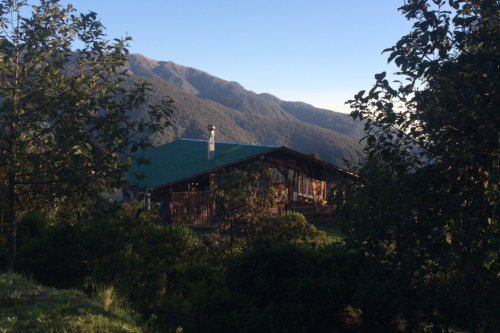
Through Conservation, The ACCA Is Protecting The Medicine of The Future
ACCA, also known as the Association for the Conservation of the Amazon Basin, is an organization that focuses on the protection and conservation of the southern Peruvian Amazon– a rich botanical tapestry long revered as a pharmaceutical treasure-chest. In an age when Western Medicine is looking increasingly towards herbal remedies to find solutions to systemic medical problems (like our increasing reliance on antibiotics), the ACCA works with communities, researchers, and Southern Peruvian government in order to promote sustainable conservation practices that are more important than ever.
One of ACCA’s several broad goals is to create Conservation Corridors in several key areas of the basin– one of the most botanical-diverse regions of the world. The goal is to provide a region for organisms to safely reside in and move across elevation gradients, while minimizing the effects of habitat fragmentation. Last year, the ACCA created three corridors: the Tambopata Manu Conservation Corridor, the Castañero Corridor, and the Yungas Corridor, each of which has a different focus within the organization’s primary objective to conserve biodiversity in large areas of the increasingly-vulnerable Andean region.
From the lowland Amazonian station at Los Amigos to the foothills of the Andes (where the Villa Carmen Biological Station resides) to the cloud forest region (where the Wayqecha station resides), researchers are compiling a database of information about the biodiversity of the region. With this information, the ACCA works to educate local communities and students from around the world, while inviting scientists to visit and conduct research at the stations themselves. With a focus on ethical research, one of their main intentions is to give back to every community the ACCA’s visits, sharing the information they find with the people who inhabit the area. (ACCA also works with indigenous communities to promote the growth of ethical eco-tourism in learning local customs and crafting– a facet of their work which has historically not been explored by other nonprofits and multinationals in the region.)
“We invite groups of elementary school-aged children to the station to play games and talk about conservation. They, in turn, taught us about every plant we passed and what it was used for in their communities.”
Crowd-sourcing and open-sourcing of biological data is not new in the scientific community, but it is increasingly important in an age of alternative facts. Equally impressive are the many ways that ACCA practices sustainable science in the region. Villa Carmen is ACCA’s largest biological station, where scientists are working to perfect the synthesis of Biochar. (Plant matter from compost-like materials can be converted into charcoal that holds carbon, which is then placed back in the soil of agricultural plantations to increase the retention of nutrients in the soil, and to reduce the rate of release of carbon dioxide into the atmosphere; this byproduct is Biochar.)
Around 30% of the food consumed on at Villa Carmen station is also grown on site. Large fishponds (hubs for “pisci-culture”) house pacu fish (an omnivorous South American freshwater fish) that are to be consumed by ACCA staff members, students, and researchers working on the station. Banana and yucca plantations line the road entering the station, and citrus trees are found throughout the area.
The attitude around the station is heavily grounded in teamwork and weaving together a community of support. Within the staff, everyone plays a role, and each role is incredibly important to the station’s success– a symbiosis that mirrors the complex ecosystem surrounding it.
I had the pleasure of studying abroad at Villa Carmen, where I spent three months exploring the jungles, observing wildlife, learning about threats to the region, and finding practical ways to help combat those threats. (Our group was there for an extended period of time, so we were also able to contribute to some of the harvesting of yucca, catching pacu, and reforesting some areas that had once been used for other agricultural practices.) One of the most important ways to encourage conservation in one’s own back yard is through education, especially that of our young people. Three different times we were able to invite groups of elementary school-aged children to the station to play games and talk about conservation. They, in turn, taught us about every plant we passed and what it was used for in their communities. This give and take of information was both poetic and functional– and it’s essential if global society is to learn how to work together in order to save the unique biodiversity that exists in the world.
For more information on the ACCA– and for other conservation tips and resources– visit the organization’s website.



































